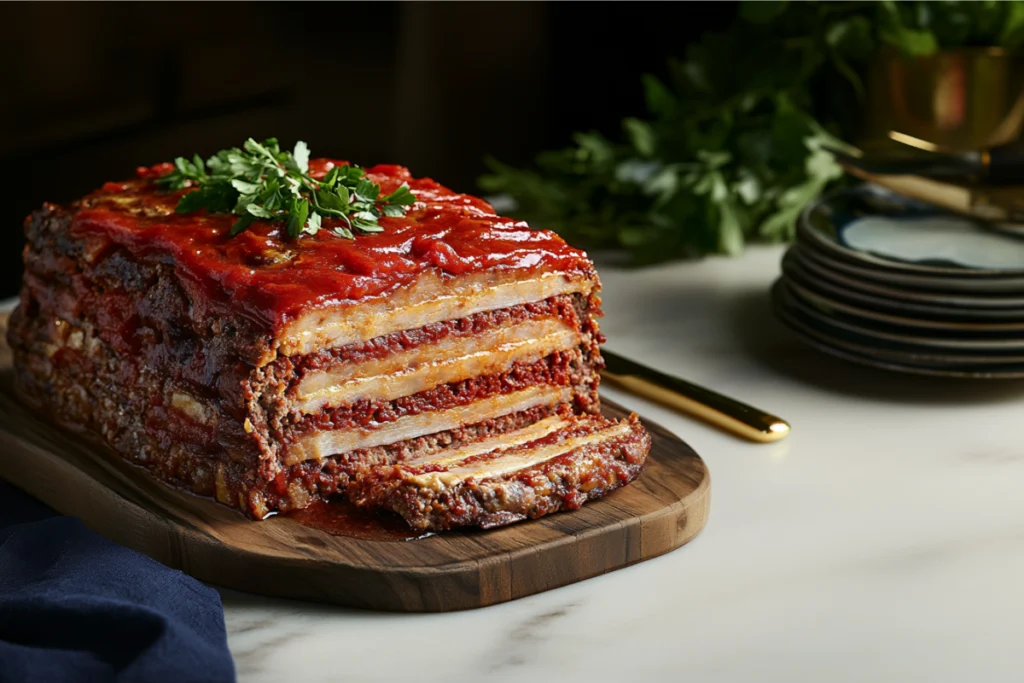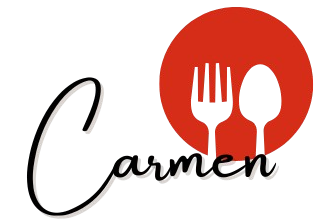
Meatloaf has a reputation as a comforting, homestyle dish enjoyed across generations. Yet, one question often arises among home cooks: Should you drain the grease from meatloaf? Grease, which naturally accumulates when cooking, brings both benefits and drawbacks in terms of flavor, texture, and health. In this article, we’ll explore why meatloaf becomes greasy, the pros and cons of draining it, various methods to reduce grease, and much more. Whether you’re after a healthier meatloaf or a perfectly moist one, this guide will help you navigate the best techniques for making your meatloaf just right.
Why Is Meatloaf Greasy?
Meatloaf often becomes greasy because of the fat content in the ground meat. As meat cooks, its natural fat content melts, forming a layer of grease that can pool around the meatloaf in the pan. This grease can vary depending on the type of meat you use—ground beef, pork, or a combination—each of which brings different fat levels to the recipe. Ground beef with a high-fat ratio, like 80/20, will yield more grease compared to leaner meats such as 90/10 or ground turkey.
Another factor in grease buildup is the cooking method and tools. Cooking meatloaf in a traditional loaf pan traps the grease around the meat, creating an almost “self-basting” effect that can make the loaf excessively moist and greasy. Alternatively, using a specialized meatloaf pan with a drain insert allows the grease to drip out, helping to manage moisture without excessive grease. For more about keeping your meatloaf flavorful without extra grease, take a look at the Ultimate Guide to Meatloaf Sauce Recipes on Carmen Recipes, which provides ideas for sauces that complement meatloaf beautifully.
Should You Drain Grease from Meatloaf?
There are pros and cons to draining grease from your meatloaf, so let’s break them down to see how each impacts flavor, texture, and health.
Pros of Draining Grease
- Healthier Meatloaf: Draining the grease helps reduce the amount of saturated fat and calories in each serving. This is especially beneficial if you’re aiming to make a healthier dish or are watching your fat intake.
- Enhanced Texture: Grease can sometimes make the exterior of the meatloaf soggy. Draining it provides a firmer outer texture, which many find more appealing.
- Cleaner Flavor Profile: Too much grease can overpower the flavors of the spices and other ingredients. Removing excess grease allows the true flavors of the meat and seasonings to shine through, creating a more balanced taste.
Cons of Draining Grease
- Risk of Dryness: Fat plays an essential role in keeping meatloaf moist. When you drain grease, you also risk removing some of the moisture that contributes to a juicy texture.
- Reduced Flavor: Fat is a flavor carrier, and by draining the grease, you might lose some of the richness that makes meatloaf satisfying. If you enjoy a more decadent flavor, keeping a portion of the grease may be preferable.
Ultimately, the decision to drain grease depends on your texture preference and nutritional goals. If you’re worried about drying out the meatloaf, a great approach is to use a meatloaf pan with a drain insert, which allows some grease to drain away naturally during cooking. For additional tips on keeping moisture in your dish without relying on grease, read through the Do You Cover Meatloaf When Baking? Guide for ideas on covering and cooking methods.
How to Drain Grease from Meatloaf
Draining grease is straightforward, but there are a few effective methods to make this step easier:
1. Use a Meatloaf Pan with Drain Inserts
Specialized meatloaf pans often come with a lower compartment where grease can collect as it drips through holes in the top layer. This setup allows you to cook the meatloaf without having it sit in a pool of grease. The result is a well-drained meatloaf that retains moisture without being overly greasy.
2. Tilt the Pan Carefully
If you’re using a regular loaf pan, once the meatloaf is done, carefully tilt the pan to one side, letting the grease pool. Using a large spoon, remove the pooled grease from one side of the pan. This method works well when you want to retain some of the grease to avoid excessive dryness.
3. Use a Turkey Baster
A turkey baster is an excellent tool for drawing out grease during or after cooking. Simply insert the baster into the grease pool and suction out the fat without disturbing the meatloaf. This method allows for more precise control over how much grease you remove.
4. Cook on a Rack Over a Baking Sheet
Another effective approach is to bake the meatloaf on a wire rack placed over a baking sheet. The grease drips through the rack and collects on the sheet below, keeping the meatloaf from sitting in its own grease. This method works especially well if you’re aiming for a crispy exterior.
These methods can help you manage grease and improve both the texture and taste of your meatloaf. Experiment with each technique to find the one that best suits your preferences.
Alternatives to Reduce Grease in Meatloaf
If you’re looking to avoid excessive grease from the start, here are some alternatives:
Use Leaner Meats
One of the most effective ways to reduce grease in meatloaf is to use leaner ground meats, like ground turkey or beef with a higher lean-to-fat ratio (e.g., 90/10 or 93/7). These cuts will yield less grease during cooking, making the dish lighter without sacrificing too much flavor.
Add Absorbent Ingredients
Incorporating fillers such as breadcrumbs, oats, or crushed crackers can help absorb some of the fat as it melts, preventing it from pooling around the meatloaf. These ingredients act as sponges, soaking up excess grease while adding bulk and structure to the loaf.
Make Mini Meatloaves in Muffin Tins
Another way to reduce grease is to portion your meatloaf mixture into muffin tins, creating individual servings. The grease can gather around each mini loaf, making it easy to drain before serving. Plus, this method helps with portion control and faster cooking times.
Bake on a Sheet with a Rack
Using a rack allows the grease to drip below the meatloaf, minimizing its contact with the fat. This approach can produce a more uniform crust and is ideal for those who prefer a less greasy meal.
Each of these methods offers an effective way to control grease while still delivering a delicious, juicy meatloaf. To add even more flavor to lean meats, visit What Should I Mix with Ground Venison? for tips on incorporating flavorful additions that can make lean meats more satisfying.
Impact of Grease on Flavor and Texture
The decision to retain or drain grease significantly influences both the flavor and texture of your meatloaf. Grease contributes to the richness of the dish, imparting a depth of flavor that is difficult to replicate with lean meats alone. However, too much grease can leave the meatloaf heavy, detracting from the balance of flavors.
By controlling grease levels, you can fine-tune your meatloaf’s flavor and texture to your liking. A well-drained meatloaf often has a firmer outer crust, while one that retains more grease will be juicier and richer in flavor. Balancing these factors allows you to create a meatloaf that’s not only delicious but also suited to your personal taste and dietary needs.
Health Considerations of Grease in Meatloaf
Draining grease from meatloaf not only affects taste but can also improve its nutritional profile. Removing excess fat reduces the amount of saturated fat and calories, making the dish healthier and lighter. This can be particularly important for those monitoring their fat intake or aiming for a more heart-friendly meal.
For those looking to cut down on fat, using leaner ground meats is one of the best options. Ground turkey or chicken can offer a lighter alternative to traditional beef meatloaf while still delivering on flavor. For insight into healthy meat options, take a look at the Is Ground Chicken Healthy for Weight Loss? article on Carmen Recipes, which offers guidance on selecting lean proteins for weight-conscious cooking.
Common Mistakes to Avoid When Making Meatloaf
To ensure the best results, keep these common meatloaf mistakes in mind:
1. Using High-Fat Meat Exclusively
Using only high-fat ground meats like 80/20 beef can result in an overly greasy meatloaf. Mixing lean ground meats or using meat blends can reduce grease while preserving flavor and moisture.
2. Skipping the Draining Step
Even if you’re okay with some grease, consider draining at least a portion of it to avoid sogginess. Using a draining pan or tilting the pan briefly can help without losing all the moisture.
3. Over-Mixing the Ingredients
Mixing the meatloaf too much can cause a tough texture. To avoid this, combine ingredients just until everything is evenly distributed.
4. Baking in a Tightly Enclosed Pan
Cooking in a tightly enclosed loaf pan traps grease around the meat, creating a soggy exterior. Opt for a draining pan or bake on a rack if you want to avoid this.
Following these tips will help you achieve the ideal meatloaf texture and flavor balance.
Frequently Asked Questions (FAQs)
Does draining the grease make meatloaf dry?
Yes, draining can remove some moisture along with the grease. To prevent dryness, use moist ingredients like eggs or grated vegetables, which add natural juiciness.
What is the best way to keep meatloaf moist without grease?
Adding grated carrots, zucchini, or onions can add moisture without relying on fat. These vegetables also boost flavor and nutrition.
Is it safe to pour grease down the sink?
No, grease can solidify and clog pipes. Allow the grease to cool and then discard it in the trash.
Can I use a meatloaf pan with a drain insert to reduce grease?
Absolutely! These pans are designed to let grease drip away, resulting in a cleaner, less greasy finish.
Does the grease contain any flavor that benefits the dish?
Yes, grease holds flavor, so draining some but not all can create a balance between taste and health.
Conclusion
In the end, deciding whether to drain the grease from your meatloaf comes down to your flavor preferences and health goals. While draining grease can improve texture and make the dish lighter, retaining some can add flavor and richness. Try out different methods to see which balance works best for your needs.
For more inspiration on achieving a perfectly balanced meatloaf and exploring delicious recipes, head over to Carmen Recipes, where you’ll find everything from the Ultimate Guide to Meatloaf Sauce Recipes to expert tips on Ground Chicken for Healthy Meals. Enjoy experimenting with flavors and techniques to make your best meatloaf yet!
